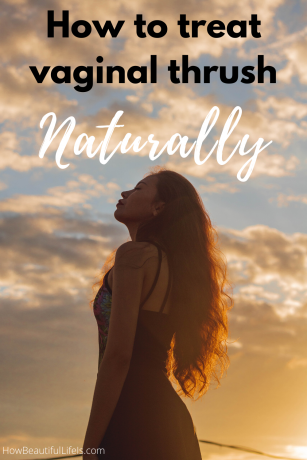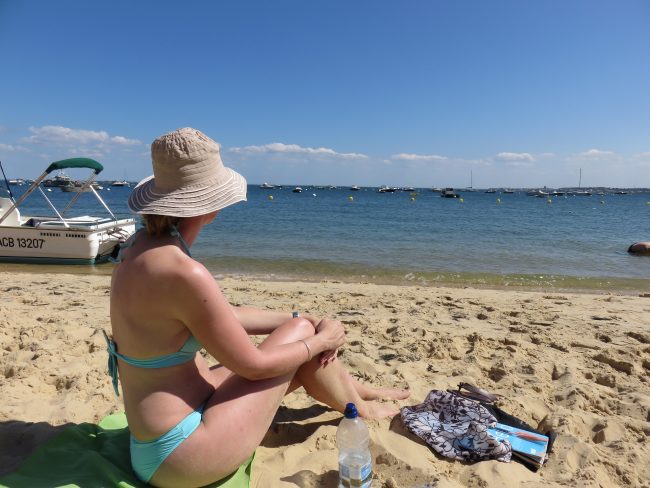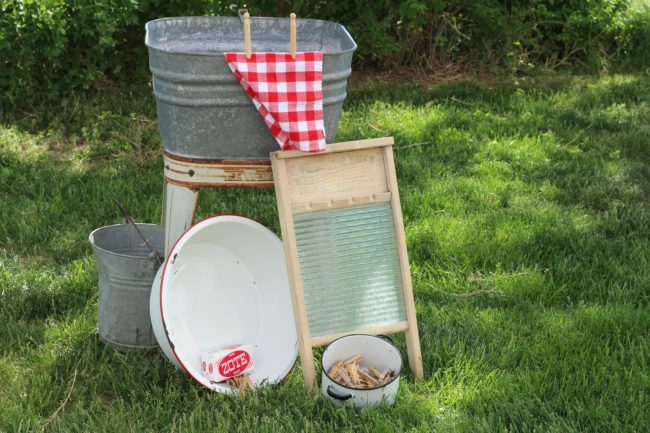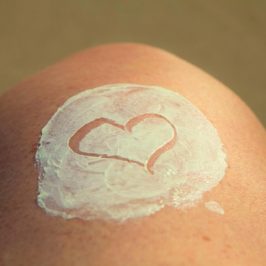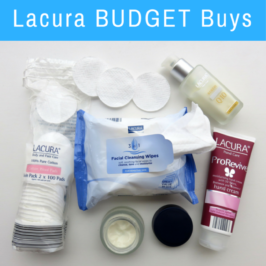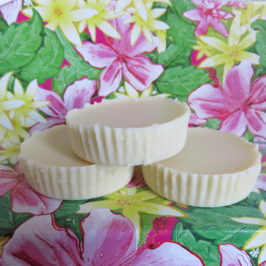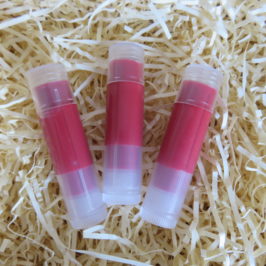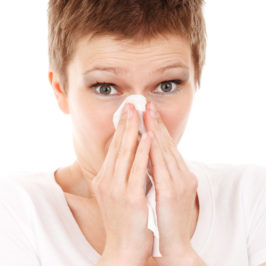This post may contain affiliate links. If you make a purchase through a link, I may receive a small commission, at no cost to you. These commissions help keep this website up and running, and I thank you for your support. Read my full disclosure here.
Firstly, I want to make it clear that this post is not anti-mainstream vaginal thrush treatments. I’ve written this post because there are times when you can’t readily access medication or you may have problems with recurring thrush and are looking for ways to reduce your rate of infection and need for continual medicated treatment which comes at a considerable cost over time.
The first step to successfully treat and prevent thrush is to understand how it occurs. Vaginal thrush is caused by an overgrowth of Candida albicans yeast which is a type of fungus that loves warm, moist environments. It lives on the skin and in the vagina naturally and is kept in check by our immune system and friendly bacteria. However, when they are not functioning optimally, the yeast can get out of control and cause a thrush infection. Causes can include antibiotics, hormonal changes, or problems with your immune system, but sometimes it can arise for no apparent reason.
Thrush is very uncomfortable, and at it’s worst, rather painful, which is why you need to treat it promptly. The symptoms you may experience include:
- vaginal discomfort – itching or burning
- a thick, white discharge with a ‘cottage cheese’ appearance and yeasty smell
- redness or swelling of the vagina or vulva
- stinging or burning while urinating or during sex
- splits in the genital skin.
Bacterial and fungal infections are often confused for one another, so if you are not sure, you should visit your doctor or sexual health clinic to get tested. The Canesten website also has a helpful online test to help you self-diagnose and they also have a home self-testing kit. Some of the treatments for bacterial and fungal infections are similar, so I have included a mention where treatments can be used for both.
Clinical Treatment Options
If you have a raging thrush infection, then go and seek immediate medical treatment for it, as the natural treatment options are not as fast at treating thrush. Head to the pharmacy to buy some antifungal medicine. The cream contains Clotrimazole and the tablet contains Fluconazole. Canesten is the mainstream popular brand, but you can also get cheaper generic brands with the same ingredients.
Treatment options include:
- Vaginal pessary and medicated cream – This treatment involves inserting a medicated cream, gel, or capsule inside your vagina. It’s a bit messy, which is why most people prefer taking the oral capsule. The cream really helps to soothe the itching and is usually sold in the kits above to be used in conjunction with the capsule and pessary. There are two strengths – 1% and 2%. The latter can only be obtained from the pharmacy.
- Oral capsule – This treatment involves taking one oral capsule as a one-off treatment.
Natural Treatment Options
These natural treatment options originally arose when I was out on a hiking holiday in the middle of nowhere over a Christmas holiday period. As we drove through the final village before heading out into the great outdoors, I began to get that slight itching feeling. I immediately dismissed it, as I was excited and distracted by the thought of our week long holiday in the peaceful countryside. By the time I realised that I had a problem, I knew that even if we drove all the way back to the closest village, the pharmacy would be closed for the holidays. Even when it was likely to be opened, I didn’t want to ruin our holiday by spending a day driving back to the nearest village to get treatment for my thrush.
For some people vaginal thrush is a rare occurrence, but for others it can become a recurring problem. Unfortunately for me, after having to come off the contraceptive pill for medical reasons I experienced hormone related recurring thrush. But since discovering these natural treatments, I have been able to avoid multiple full-blown thrush infections and having to spend money on expensive thrush treatments. These natural treatments are not as quick to work as the medicated ones, so are best used in the early stages of infection or when you can’t get access to medicated treatment.
Salt Water
Although salt has not been shown to cure thrush, applying warm salty water to the vaginal area really helps to ease the itching caused by the thrush. Mix 1 teaspoon of water to 1 cup of warm water. Stir the water until all of the salt crystals have dissolved. Make sure that the water is not too hot so it does not scold the area – lukewarm is best. Then gently bathe the area in the salty water for 5 -10 minutes. When you are finished, rinse the area clean with warm water.
Keep Clean
Harsh soaps and perfumed body washes can actually cause or aggravate thrush. Your vagina needs a healthy balance of good bacteria but washing with aggressive cleansers can strip away the natural flora. Furthermore, the vagina needs to maintain a low pH level less than 4.5. Therefore, it is recommended to just use water to cleanse the area. If you feel you need to use some kind of soap, then these are my two favourites:
- Dove Sensitive Skin Beauty Bar – This soap is fragrance free, hypoallergenic, and is gentle for sensitive areas.
- Cetaphil Gentle Skin Cleanser – This Cetaphil liquid cleanser is a clinically proven therapeutic skincare range for dry, sensitive or compromised skin. It’s super gentle and is fragrance free and non-comedogenic (doesn’t block your pores). The pump makes it easy to use in the shower.
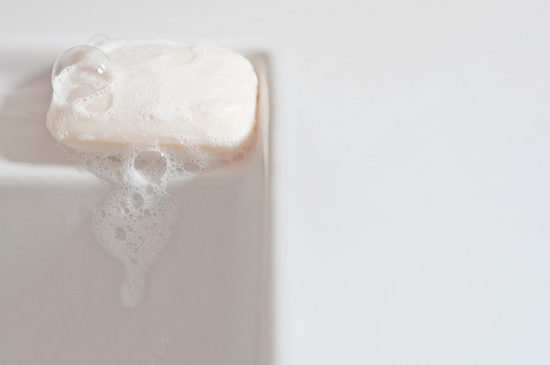
Keep Dry
After cleansing your vagina, make sure you completely dry the area, as fungus loves to live in warm, moist areas. Each time you use the toilet, make sure you dry the area thoroughly afterwards. Gently dab the area with toilet paper until it is dry to the touch.
Wipe From Front to Back
After using the toilet, make sure you only wipe from front to back to avoid fungal and bacterial infections. This can also really help to prevent urinary tract infections (UTI’s) as well.
Use Unscented Toilet Paper
These days toilet paper can be fragranced and contain moisturisers, but these chemicals can disrupt the normal pH of your vagina and lead to a yeast infection. When shopping for toilet paper, aim to buy the fragrance and moisturiser free toilet paper.
Wear Natural Fibres and Avoid Tight Clothing
A lot of underwear these days are made of synthetic materials that do not breathe. I know a lot of people also love to wear g-strings and thongs, but these are all going to create a breeding ground for fungi. So go and buy yourself some cotton briefs. Try to wear loose trousers that allow the area to breathe. You may love to wear thick tights for leisure wear and under skirts and dresses, but they can prevent the area from breathing and staying dry.
Sleep Bottom Free
A lot of women sleep in their knickers and/or pyjama bottoms, but this is the perfect time to go bottom free and let your vagina breathe and stay dry. So go bottom free at night.
Sun Exposure
Sun is a natural antiseptic, antibiotic, and anti-fungal treatment. Fungi love the dark, so exposing it to some sunshine helps to keep it at bay. Interestingly, giving your vagina some sunshine is not a new concept – have you heard of ‘Yoni Sunning’? Yoni is a sacred sanskrit word that translates to “source of all life” or “sacred space” which refers to the vagina. Sunbathing your yoni is what Ancient Taoists called “sunning” where you simply open your legs and have your yoni drink in the sunshine! Your vagina is a sensitive area, so only expose it to the gentler morning or evening light, and limit your exposure to 10-15 minutes. This is obviously climate/location/time of year dependant as the harshness of the sun can vary a lot.
Hot Wash Your Underwear
Bacteria and fungi can live in your underwear and if you don’t wash them correctly, you might just be reinfecting yourself every time you put on your ‘clean’ underwear. In order to break the cycle and kill the fungi, set the water temperature on your washing machine to 60°C (140°F). Based on what I outlined above under ‘Sun Exposure’ you should also hang your underwear out in the sun to help kill bacteria and fungi. You can also add an antifungal laundry treatment to your washing cycle.
Probiotics
Probiotics is a rapidly growing area of research which I have written more about here. There is a huge range of bacteria living in our body that are essential to our health, so modern treatment options look to harness the power of the good to prevent the growth of harmful microorganisms. Some probiotic bacterial strains can suppress the thrush causing Candida albicans. One of the more well researched strains is Lactobacillus plantarum which is able to attach to vaginal epithelial cells and significantly reduce the adhesion of Candida albican. Research supports treating women with either an oral or vaginal treatment of Lactobacillus plantarum to restore the vaginal microbiota and prevent relapses. I like to take Bio-Kult Advance Probiotics as it contains Lactobacillus plantarum as well as 13 other probiotic strains of which also helps treat my IBS. Bio-Kult have also created a new product called Bio-Kult Candea which is specifically aimed at supporting ‘intimate flora’.
You can also purchase Lactobacillus plantarum as a vaginal capsule. You insert 1 capsule each night for 6 consecutive nights and then 1 capsule per week for 4 weeks.
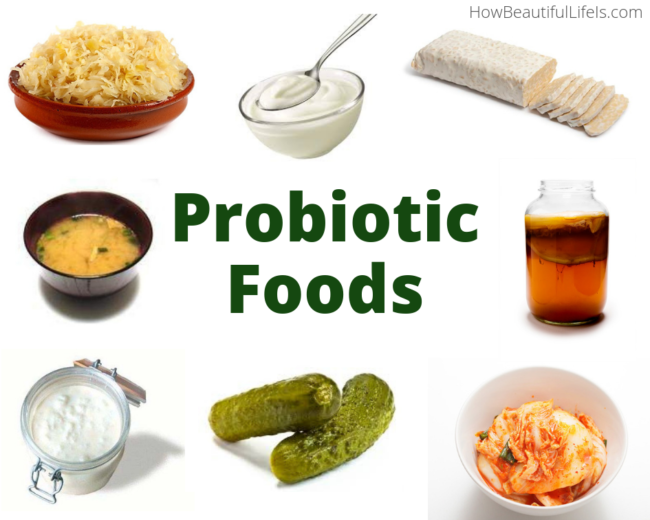
Keep Treating
One of the biggest mistakes people make is stop treating the thrush too early. You need to keep treating the area for it at least a week after the symptoms have gone because small amounts of the fungi still remain and you will just end up with another outbreak. You need to ensure you break the cycle.
Be Cautious When It Comes to Sex
Thrush isn’t considered an STI because it can occur without sexual contact, but it can be passed on to your partner during sex. Reccuring thrush infections can occur when sexual partners pass it back and forth to each other, so use protection. Another issue to consider is that sex can make the thrush symptoms worse.
The Jury Is Out
There is a lot of advice going around on treating vaginal thrush that does not have any substantiated, peer reviewed evidence to support it. Some items such as garlic and tea tree oil do have anti-fungal properties, but despite testing, there is no evidence to indicate it is successful for treating vaginal thrush.
The list includes:
- Garlic
- Coconut oil
- Tea tree oil – it should NOT be applied to sensitive areas such as your vagina (trust me, I’ve made that mistake)
- Diet – The Candida Diet which is aimed at alleviating the symptoms of candida infections has become popular, but its effectiveness is unsupported by scientific evidence.
- Turmeric
- Lemon juice
- Cider vinegar
- Grapefruit seed extract
If you read any peer-reviewed research substantiating any other natural treatments, then let me know in the comments.

